Understanding The Social Media Marketing Funnel
We take your through the steps of a typical social media marketing funnel, and share tips on how to market and advertise to users at each different stage. Plus great examples of social media ads and content from brands doing it right. Read on and find out how to get your funnel flowing.
The beauty of social media is that you can win over customers of all shapes and sizes.
Folks who’ve never heard from you before? Those people who just need a little “push” to become long-term buyers?
They’re both fair game and then some.
That said, reeling in customers through social media means you can’t take a one-size-fits-all approach to advertising.
Instead, you need to create content and ads that speak to individuals regardless of where they stand with your business.
Enter your social media marketing funnel.
By creating content and ads centered around a funnel, you can seamlessly transform prospects into customers time and time again.
What Does a Social Media Marketing Funnel Look Like?
You might already be familiar with the concept of a marketing funnel.
And if not, it’s pretty simple.
Think about it like this. As a business online that’s marketing on social media, you’re casting a pretty wide net.
Like, a net with billions of potential people in it.
Of course, you’re only going after a specific audience of prospects. Within that audience, you have folks who are going to engage with your messages and eventually become buyers after they get to know you. The process of that takes those people from Point A to Point B represents your funnel.
For different types of funnels, you have a variety of stages as your prospects learn more and engage with your brand. In this guide, we’re breaking our social media funnel into four distinct stages.

- Awareness - The first stage of your funnel involves familiarising people with who you are and what you’re selling. In other words, raising awareness among folks who’ve never heard from you before.
- Engagement - In the second stage of your funnel, you’re going back-and-forth with your followers via content and comments. These interactions can help you determine if your prospects are actually qualified leads.
- Consideration - The third stage of your funnel is the crucial build up to their final decision. At this point it's likely that your audience are considering your brand and potentially competitors.
- Action/Conversion - The third stage of your social media marketing funnel involves people actually making purchases. This is where your ads, sales emails and offers really come into play.
We can also add a final step, after the conversion has taken place. This is the loyalty stage, and involves turning those one-off buyers into repeat customers. Here you’ll basically be repeating the steps above among people who already know and trust you.
What Does a Social Media Marketing Funnel Look Like in Action?
Every business has some sort of marketing funnel already in place.
But whether or not that funnel is effective is a totally different story.
That’s why it’s so important for businesses to understand these stages and create marketing messages for each of them.
Because when one piece of your funnel lags behind, the other stages suffer as well.
And as a result, you end up leaving money and customer relationships on the table.
For the sake of converting more customers and coming up with a foolproof content strategy, businesses can’t neglect their social media marketing funnel.
To help illustrate how a funnel works, we’ve broken down how brands can create content and ads for each stage below.
1. Awareness
First thing’s first: reaching your prospects.
Again, these are the people who aren’t 100% sure about who you are or what you selling.
Maybe they’re total strangers. Perhaps they’re window shoppers. Either way, they need to be educated and made aware of why they need you in their lives.
This is where video content can be incredibly valuable. Short, sweet and wrapped up in a bite-sized package, explainer videos can educate your prospects in a matter of seconds. Here’s a great example of a “who we are and what we do” video from Bellabox:
Blog content and advertorials are likewise beneficial for pulling cold traffic through your funnel. These prospects might stumble on your content through a Google search or by seeing it shared around the social space.
For example, Canva does double-duty of attacking keywords with their blog content while also publishing sharable pieces that speak directly to their target audience.

In terms of advertising, Lookalike Audiences on Facebook are a brilliant way to tap into new prospects.
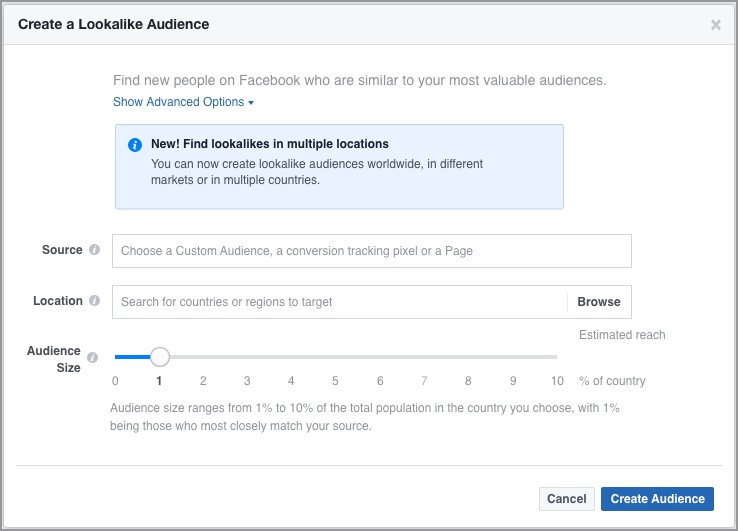
Based on the demographics, behaviours and interests of your current customers, you can create ads that speak to new faces that are likely to move through your funnel in the future.
2. Engagement / Consideration
Here’s some food for thought: the marketing “rule of seven” states that businesses need to make seven touchpoints with someone before they’re ready to buy.
The good news? Social media is a low-hanging way to make those touchpoints possible.
Likes. Comments. Shares.
These actions can all be taken in a matter of seconds, and represent engagement on behalf of your leads and prospects. Each time you pop up in someone’s feed, you passively make your business more familiar to them.
Meaningful interactions between you and your followers represent another step toward creating a new customer. That’s why it’s so important to regularly publish content that people actually want to engage with.
In addition to videos and blog posts, consider simple question-based posts which allow you to go back-and-forth with your followers.

Heck, even something as simple as a meme can do the trick. Posts that humanise your brand and show off your sense of humour are often the ones that score the most engagement. Look no further than Hello Social’s Facebook feed for proof.
On the advertising front, Facebook remarketing ads can create those ever-so-important touch points for people who might know you but haven’t necessarily taken steps toward a transaction. Even if someone doesn’t click through, they at the very least become more familiar with your brand.
Here’s a fresh remarketing ad from Sendlane I was served one day after I checked out their blog:
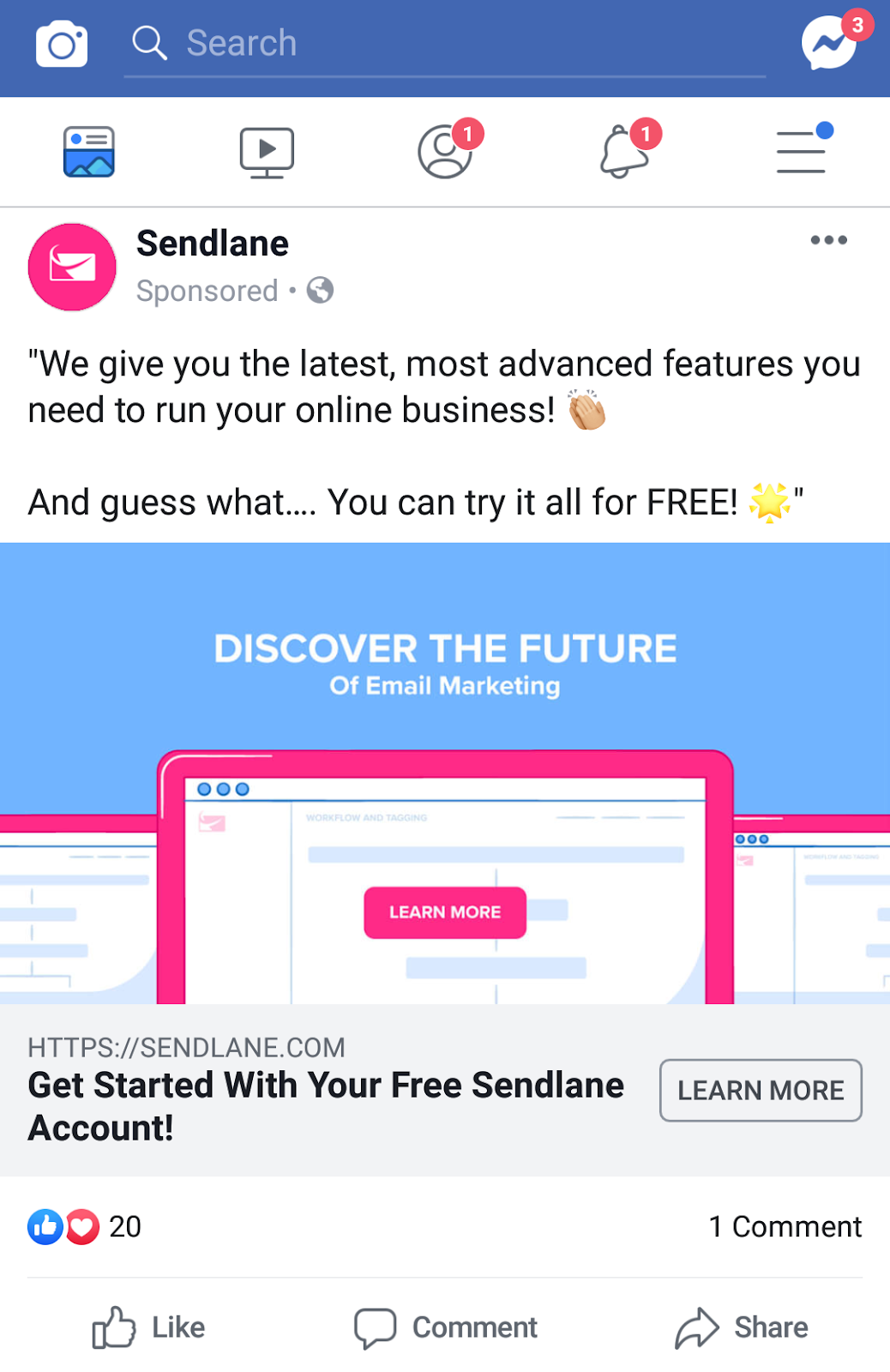
Targeting people who’ve landed on your website or interacted with you in the past, such ads are perfect for moving folks to the Conversion phase of your social media marketing funnel.
And hey, that leads us directly to our next point!
3. Conversion
So much of social media marketing is about avoiding the “hard sell.”
But after followers have taken actions such as clicking an ad, going through a trial or signing up for your email list, you know that the intent to buy is there.
The Conversion stage of your funnel ensures that you capitalise on those valuable moments.
Remarketing ads directed toward leads are fair game for encouraging conversions. Here’s an example from SoundCloud which encourages current users to sign up for a premium subscription based on their free account activity.
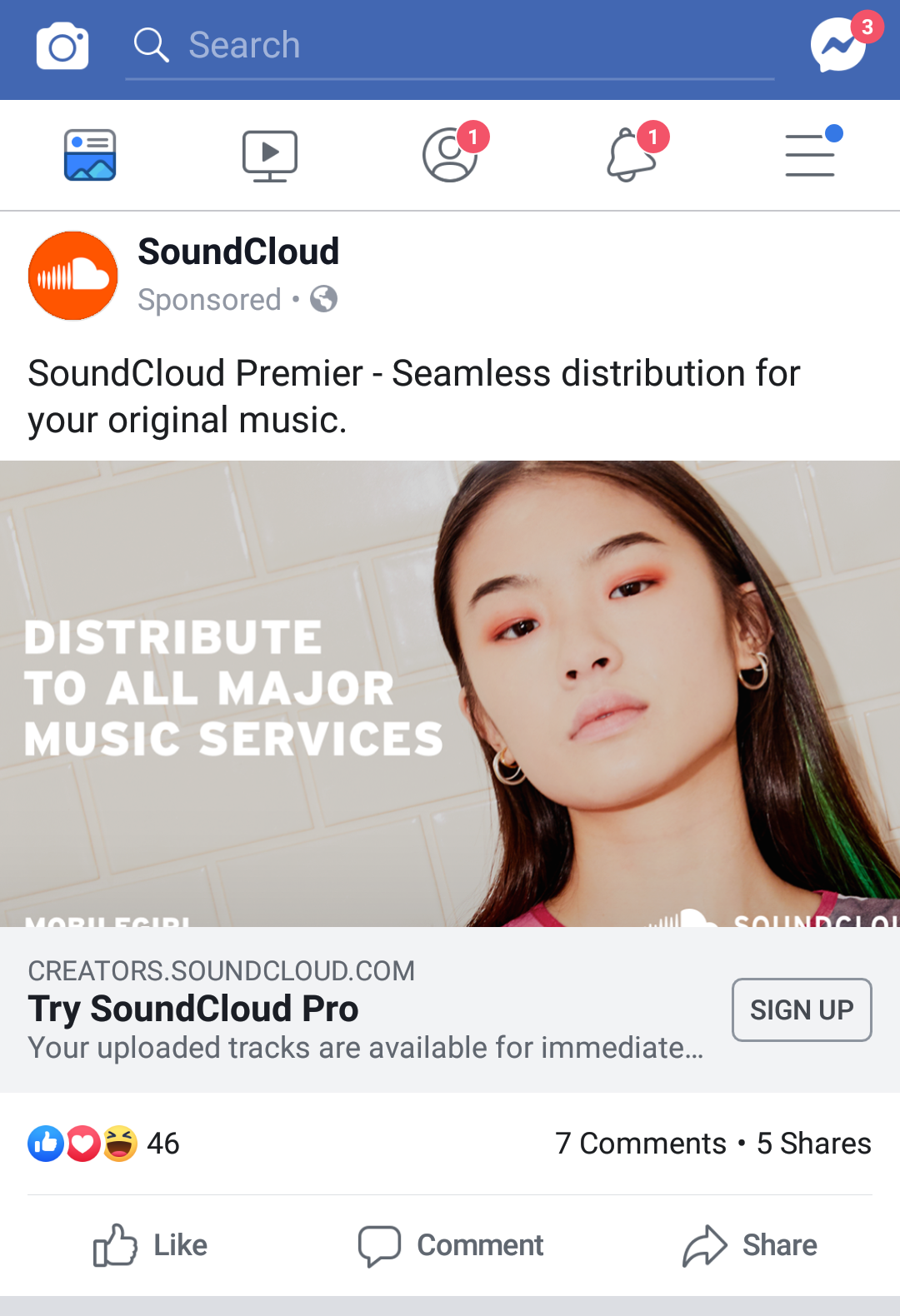
Not all of your actions in the Conversion phase necessarily have to happen via social, either. Combining email with social media with the help of exclusive offers and cart abandonment messages can help give your followers that much-needed push within in their inboxes.

And as noted, don’t be afraid to push a sale on someone who’s taken the time to interact with your business over and over again. The end-game of your social media marketing funnel is more customers, after all.
4. Loyalty
Consider that it costs five times as much to acquire a new customer than it does to retain the ones that you already have.
That’s why you can’t afford to ignore the Loyalty stage of your funnel.
This is yet another stage where remarketing ads are awesome. Pushing a new product or promotion? Want to serve a quick discount to past buyers? Segmenting your ads to target previous customers is a quick and spam-free way to encourage a repeat purchase. Here’s a great example from Bottlekeeper.
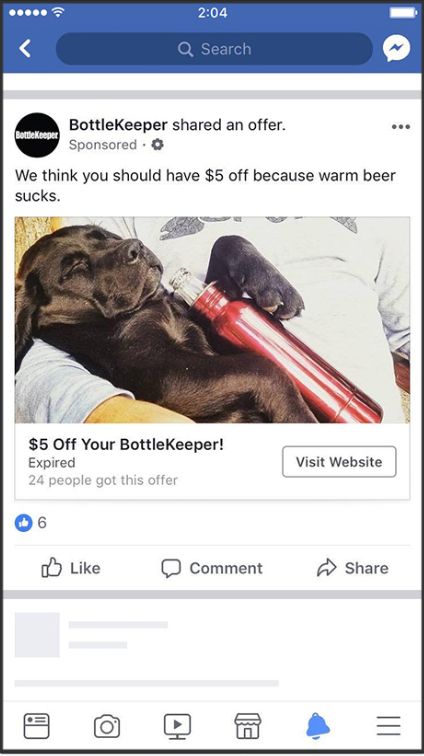
Beyond that, brands should cross-sell products and provide their customers with exclusive promotions.
Let’s bring the funnel concept full-circle by looking at Bellabox again. The brand consistently runs giveaways and gives their followers options to customize their orders, continuing to provide value to customers post-purchase.
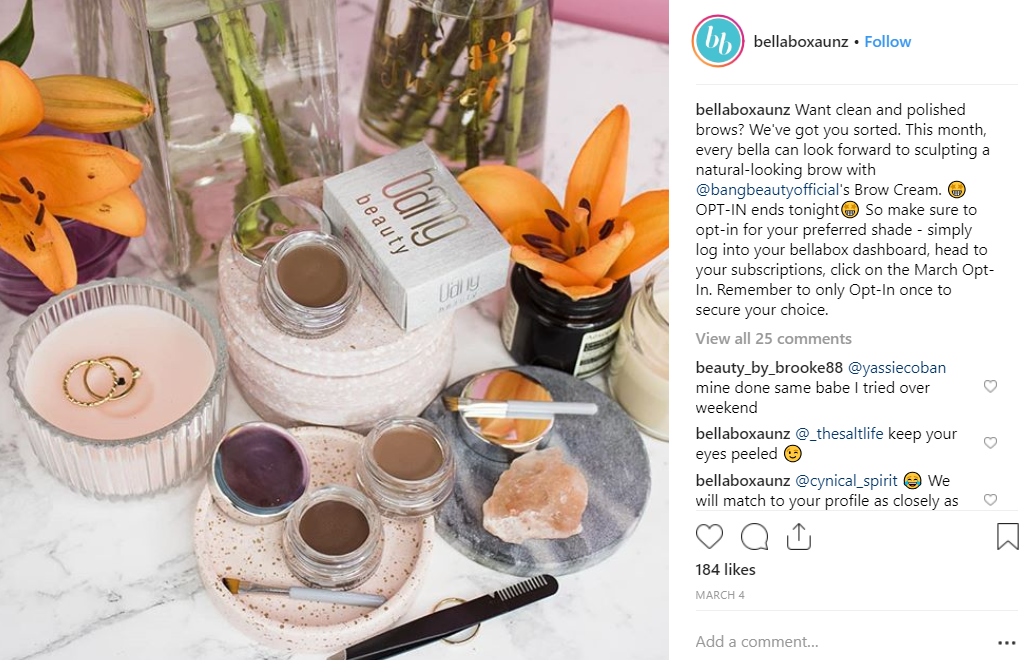
Another way to create loyalty is by publishing customer photos and other forms of user-generated content. This not only shows customers that you value them, but also provides an opportunity to push your brand’s narrative.
Check out how KORA Organics does both.
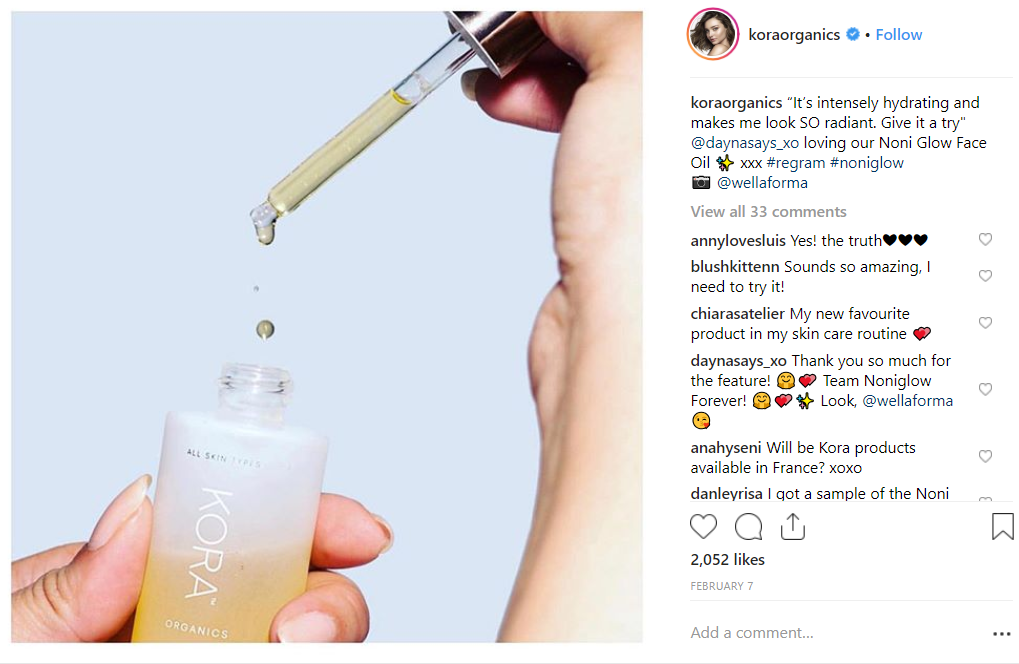
How Do I Measure the Success of My Funnel?
Good question!
Understanding the stages your social media marketing funnel is important, but so is putting of your funnel each piece under a microscope.
That’s where your analytics come in.
Many brands make the mistake of only monitoring their monetary conversions. Not only does this neglect the other three stages of your funnel, but sets businesses up for an abysmal conversion rate.
Instead, brands need to measure metrics such as how many prospects become leads, where leads are converting and how many of those conversions result in repeat customers. This comes from monitoring follower interactions beyond social media including email sign-ups, too.
Tools such as Google Analytics and Google Tag Manager can help immensely here as you track individual interactions and conversions in context without second-guessing or tearing your hair out.
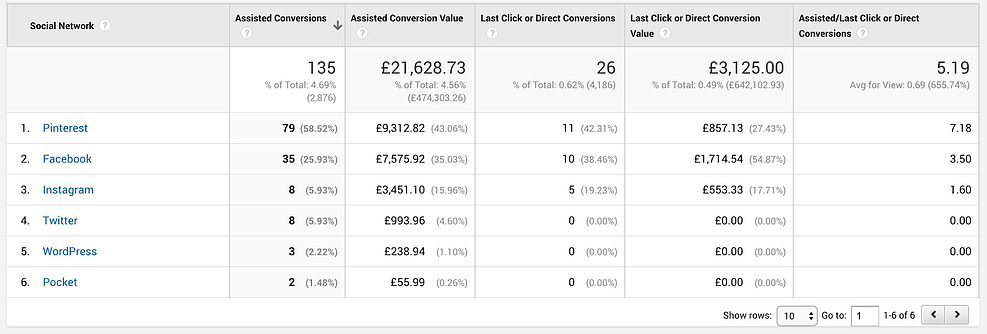
And with that, we wrap up our guide!
Have You Fine-Tuned Your Social Media Marketing Funnel?
As we said earlier, every brand on social media has a funnel in place whether they realise it or not.
So what does yours look like?
Paying attention to your audience at each level of your funnel determines everything from your ad copy to your overall content strategy.
Doing so ensures that you don’t leave any part of your audience behind and set yourself up to create as many repeat customers as possible.







